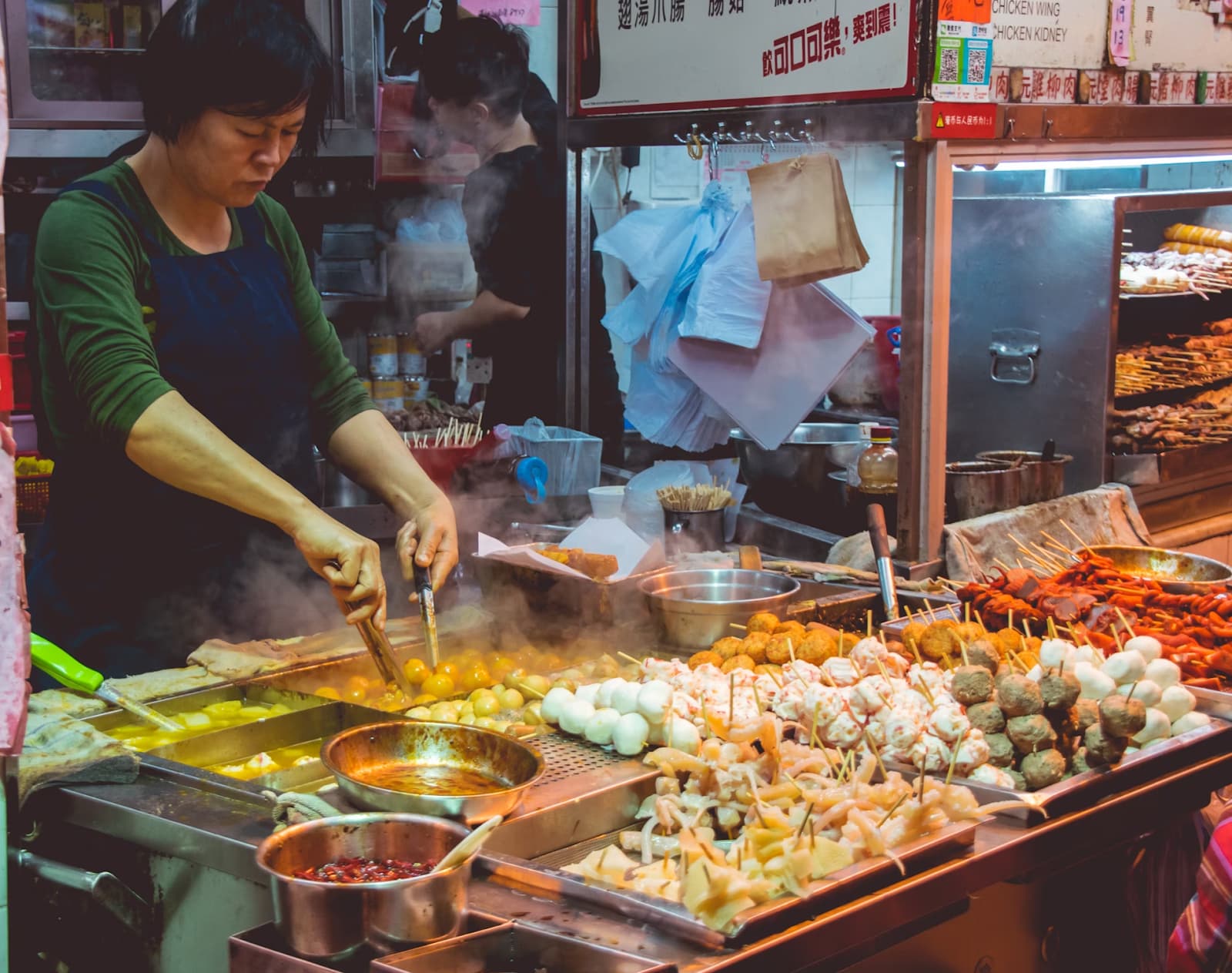Asian street food presents a rainbow of tastes and textures that are rooted in local traditions, ingredients, and creativity. Each country has its own unique street food culture, and every dish tells a story. Let’s take a closer look at some of the most iconic street food from across Asia.
Thailand: A Feast for the Senses
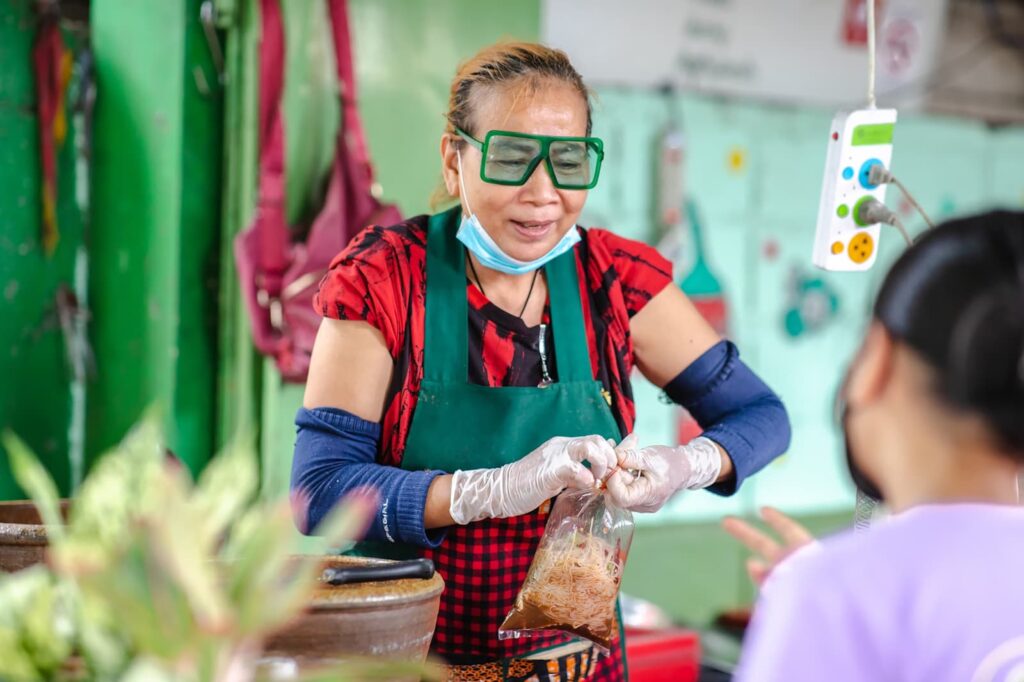
Thailand is famous for its growing street food community, where the streets come alive with tantalizing aromas and bustling energy. The food is a reflection of the country’s philosophy of balancing bold flavors—sweet, sour, salty, and spicy—all in one dish. From Bangkok’s night markets to rural food stalls, street food is not just a snack but an integral part of daily life. Some must-try dishes include:
- Khao Soi: This rich, coconut-based curry noodle dish originates from Northern Thailand, blending influences from Burmese cuisine. It features a creamy, spicy broth with tender chicken or beef, topped with crispy fried noodles and served with pickled mustard greens, shallots, and lime. The dish is a sensory delight, achieving ideal blend of tastes and textures.
- Som Tum: This spicy green papaya salad is a refreshing yet fiery dish made from shredded unripe papaya, chilies, fish sauce, lime juice, and palm sugar. Variations often include dried shrimp, peanuts, or fermented crab. Som Tum is particularly loved in the northeastern region of Isaan, but it can be found on street corners all over the country.
- Sai Ua (Northern Thai Sausage): Originating from Chiang Mai, Sai Ua is a grilled sausage made with ground pork, lemongrass, kaffir lime leaves, chilies, and garlic. The aromatic herbs and spices make it incredibly flavorful, and it’s often served with sticky rice or fresh vegetables on the side.
- Khanom Buang (Thai Crispy Pancake): This Thai dessert resembles a crispy taco, filled with coconut cream and either a sweet or savory topping such as shredded coconut, egg yolk, or chopped shrimp. Khanom Buang is one of the most iconic Thai street snacks, enjoyed by both locals and tourists.
- Mu ping (Grilled Pork Skewers): One of Thailand’s most beloved street foods, Mu Ping is marinated pork skewered and grilled over hot coals, resulting in tender, smoky bites bursting with flavor. The marinade typically includes a mix of garlic, coriander root, fish sauce, and coconut milk, giving the pork a rich, slightly sweet taste. It’s often enjoyed with sticky rice and a spicy dipping sauce, making it a popular grab-and-go meal across Thailand’s markets and food stalls.
Vietnam: Layers of Flavor
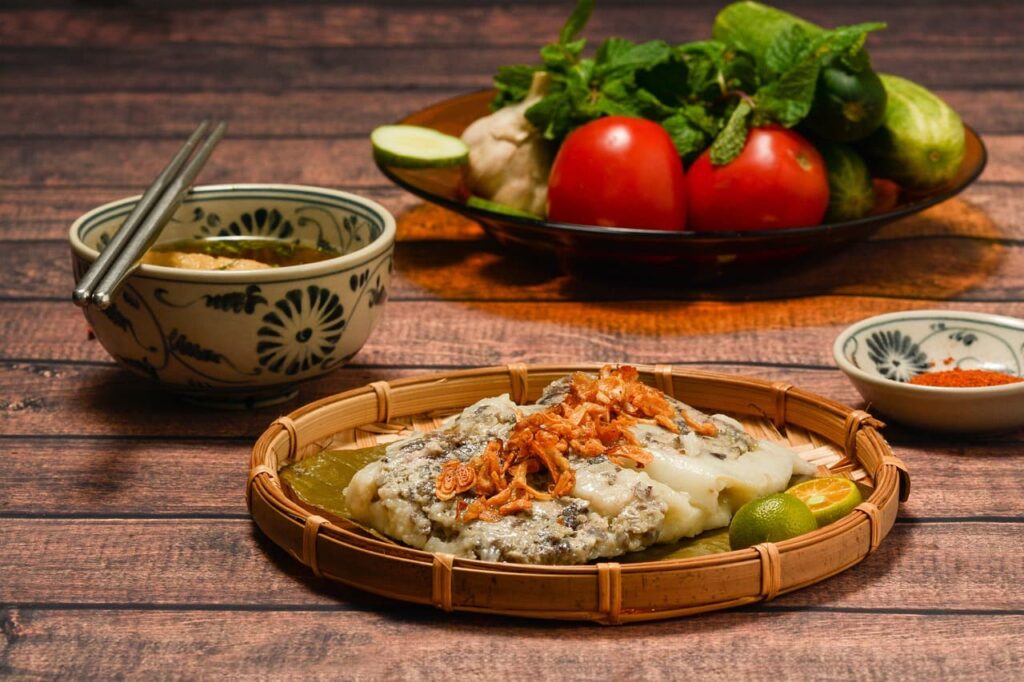
Vietnamese street food is renowned for its fresh ingredients and layered, contrasting flavors. Each bite offers a balance of sweet, salty, and sour, typically with an herbal kick. Street food is the backbone of the culinary scene in cities like Hanoi and Ho Chi Minh City, where vendors have been perfecting their dishes for decades.
- Bun Cha: This northern Vietnamese dish features juicy grilled pork patties served alongside vermicelli noodles, fresh herbs, and a dipping sauce made from fish sauce, lime juice, and chilies. It’s a dish that perfectly captures Vietnam’s knack for combining smoky, savory, and tangy flavors in one bite.
- Goi Cuon (Fresh Spring Rolls): Also known as Vietnamese summer rolls, these are light, fresh, and packed with herbs, vermicelli, shrimp, and pork, all wrapped in delicate rice paper. Dipped in a hoisin-peanut sauce, these rolls offer a refreshing contrast to the heavier, fried spring rolls.
- Banh Xeo: This crispy Vietnamese pancake is a savory delight made from rice flour and turmeric, stuffed with shrimp, pork, and bean sprouts. It’s typically served with lettuce and herbs, which are used to wrap the pancake before dipping it into a tangy fish sauce. The combination of crispy, fresh, and savory elements makes it a street food favorite.
Malaysia: Fusion on a Plate
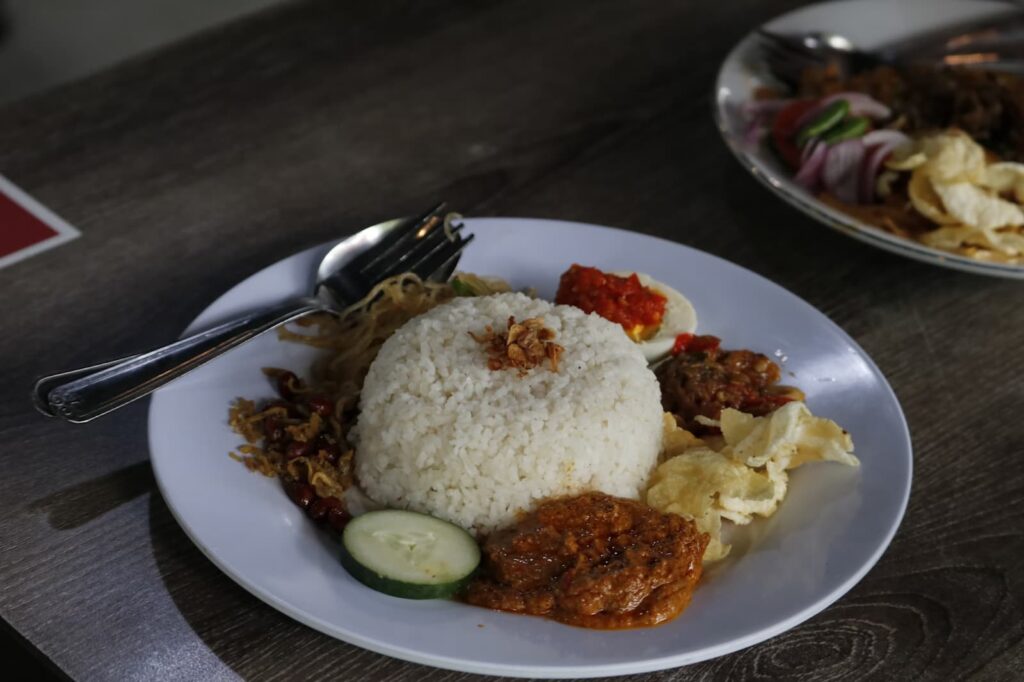
Malaysia’s street food culture is a reflection of its multicultural society, blending Malay, Chinese, and Indian culinary traditions. The result is an incredibly diverse and exciting array of flavors that offer something for everyone.
- Laksa: This noodle soup is an iconic dish that varies greatly across Malaysia. Curry Laksa is creamy and rich, with a coconut milk base, while Asam Laksa offers a tangy, fish-based broth. Both versions are packed with flavors from lemongrass, galangal, and chilies, making every slurp a new experience.
- Roti Canai: Of Indian origin, Roti Canai is a flaky flatbread that’s pan-fried to crispy perfection and served with a side of dhal (lentil curry) or other dipping sauces. It’s enjoyed at any time of day, though it’s especially popular for breakfast. Watching a vendor expertly flip and stretch the dough before cooking is a performance in itself.
- Nasi Lemak: Widely regarded as Malaysia’s national dish, Nasi Lemak consists of fragrant coconut rice served with spicy sambal, crispy fried anchovies, roasted peanuts, hard-boiled eggs, and slices of cucumber. It’s a flavorful, well-rounded meal, often eaten for breakfast or as a hearty snack.
Japan: A Balance of Taste and Presentation
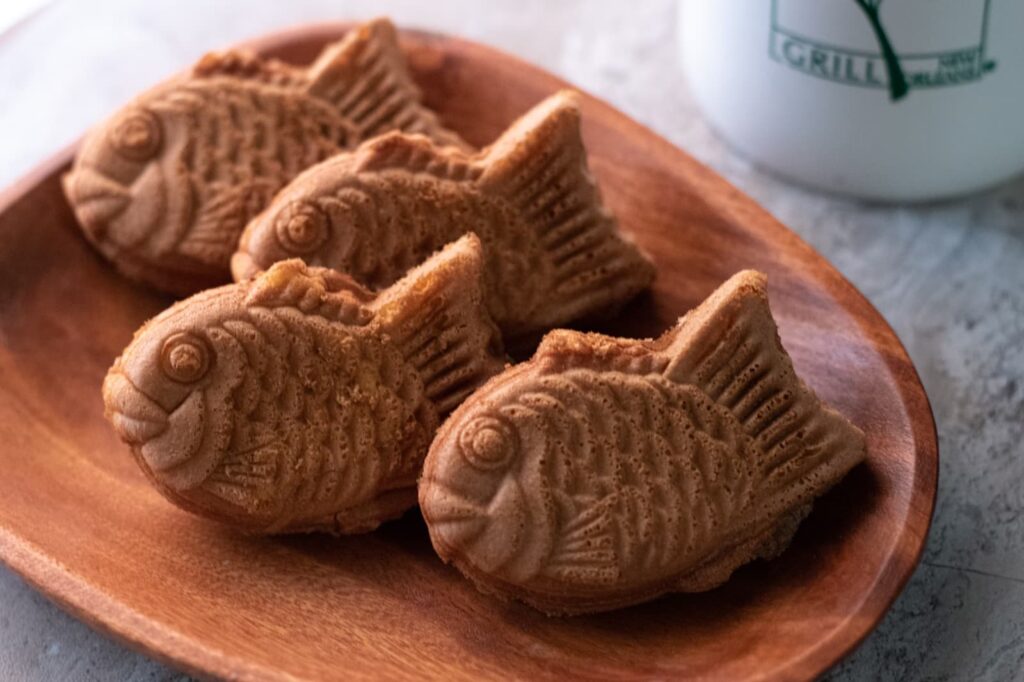
Japan’s street food is a perfect reflection of the country’s emphasis on balance and presentation. Though not as widely consumed on the streets as in some other Asian countries, Japan’s street food is often found at festivals and markets, offering beautifully crafted dishes that are just as appealing to the eyes as they are to the taste buds.
- Taiyaki: This fish-shaped cake is filled with sweet fillings like red bean paste or custard. Its distinctive shape and sweet flavor make it a popular snack during festivals, with the crispy exterior giving way to a warm, soft filling inside.
- Yakisoba: A stir-fried noodle dish typically made with pork, cabbage, and a tangy, savory sauce, Yakisoba is a festival staple in Japan. Topped with pickled ginger and seaweed flakes, it’s a flavorful and filling street food that appeals to both locals and tourists alike.
- Karaage: Karaage is Japan’s version of fried chicken, made by marinating small pieces of chicken in a soy sauce-based marinade, then coating them lightly in flour before frying. The result is crispy, juicy bites that are perfect for snacking while exploring Japan’s busy streets.
South Korea: Street Food for Every Taste
South Korea’s street food is known for its variety, with options ranging from savory to sweet, spicy to mild. Seoul’s night markets are a must-visit for anyone looking to experience the full spectrum of Korean street food.
- Sundae: This dish is not for the faint of heart. Sundae is a type of blood sausage, made from pig intestines stuffed with noodles, rice, and congealed blood. While its texture and flavor might be unusual for some, it remains a beloved comfort food for many Koreans.
- Eomuk (Fish Cake Skewers): These skewers of fish cake are often served floating in hot broth, providing a warming snack during the colder months. The skewers come in a variety of shapes and flavors, with different sauces to complement the fish cakes.
- Bungeoppang: A popular winter snack, Bungeoppang is a fish-shaped pastry filled with sweet red bean paste. The crispy outer shell and warm filling make it a comforting treat during cold evenings.
China: The Ultimate Destination for Street Food Lovers
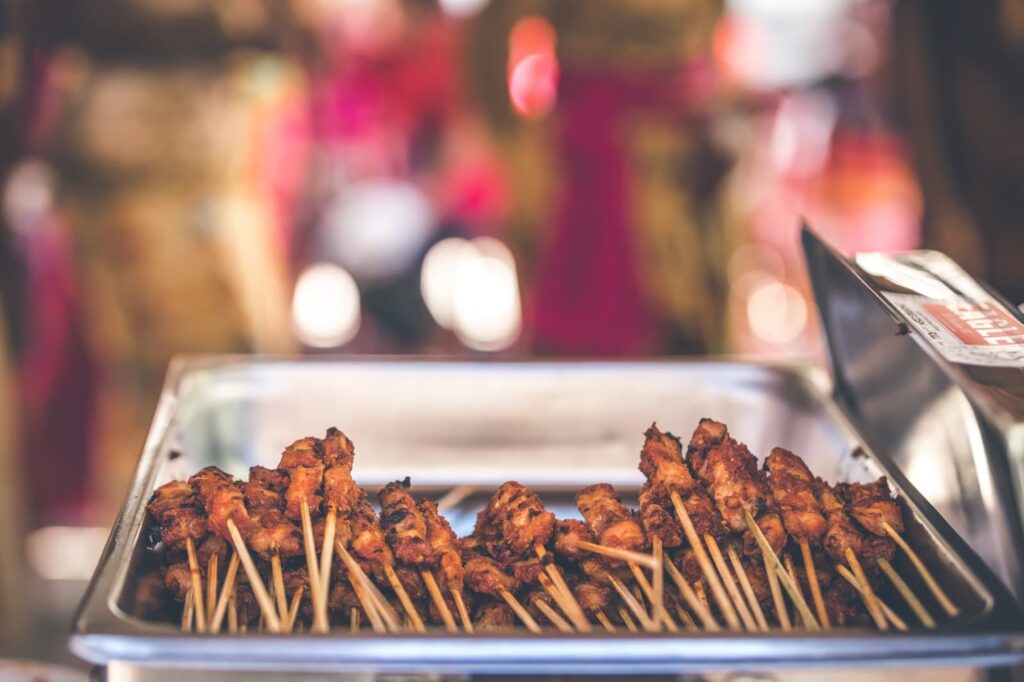
China’s street food culture is as diverse as the country itself, with each region offering its own specialties. From Beijing to Sichuan, Chinese street food is packed with bold flavors and fascinating textures.
- Jianbing: This savory Chinese crepe is a breakfast favorite. Made from a batter of flour, mung bean, or millet, it’s cooked on a griddle and filled with egg, hoisin sauce, scallions, cilantro, and crispy wonton crackers. The combination of crunchy and soft textures makes it a popular grab-and-go breakfast for busy locals.
- Chuan (Meat Skewers): Particularly popular in northern China, Chuan are grilled skewers of lamb or beef seasoned with cumin, chili powder, and other spices. The skewers are smoky, spicy, and a perfect example of street food’s ability to pack maximum flavor into a simple dish.
- Tanghulu: A beloved sweet treat, Tanghulu consists of skewered fruits, often hawthorn berries, coated in a hard sugar syrup. The contrast between the tart fruit and the crunchy sugar shell is a nostalgic favorite for many who grew up eating it during festivals.
